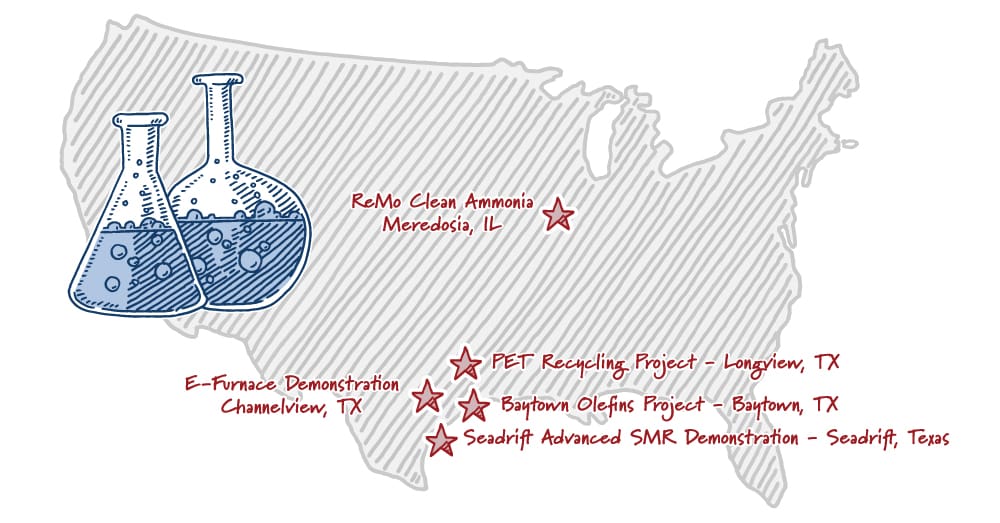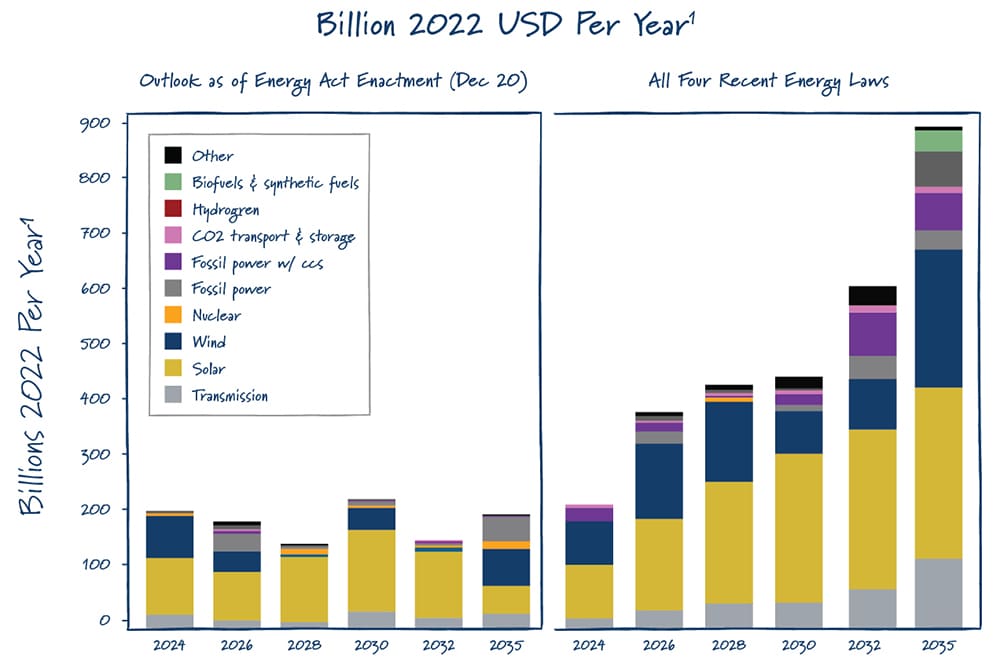The story of American energy is one of innovation. And today, we’re in the middle of a true revolution that the 118th Congress has an opportunity to capitalize on.
America has reduced its total carbon dioxide emissions by more than any country in the last 20 years. And it's largely due to American innovations in the power sector — where the U.S. is producing higher performing, lower emissions technologies to regenerate the world. That doesn’t mean we should slow down.
By 2030, the industrial sector will be the largest emitting sector of our economy. This means many of the same types of technology breakthroughs we’ve seen in advanced nuclear and energy storage will be needed in the various pathways that could tackle industrial sector emissions.
But, if we don’t get our public policy right, these technologies will be built in China or Russia instead of at home.
The rest of the world’s population is growing faster than ours, which has led to more power and industrial activity, and more emissions as they buy higher emitting technology from China and Russia.
But what if we didn’t accept that? Of course, the world needs energy… but what if it were all clean? And why can’t America be the leader?
ClearPath has outlined five big areas where conservative clean energy policy can lead to more American innovation, reduce global emissions, make energy more affordable, and strengthen our economy.
1. Implementation of the big 4 energy bills
The past five years have yielded some of the most significant bipartisan innovation and climate policies in our nation’s history, dramatically impacting expected annual public and private sector investment in energy infrastructure.
Annual Capital Investment in Energy Supply Related Infrastructure
<

In November 2021, Congress enacted the bipartisan Infrastructure Investment and Jobs Act (IIJA), which funded a wide-range of clean energy demonstration programs, including carbon capture, direct air capture, energy storage, geothermal, hydrogen, and industrial. The IIJA built on many of the technology moonshots authorized in the Energy Act of 2020, which Congress passed and then-President Trump signed into law.
In August 2022, Congress also passed the CHIPS and Science Act, a bill that got significant attention for its support of the U.S. semiconductor industry, but also included big bipartisan wins to bolster scientific research and bolster American manufacturing and strengthen supply chains. This included the House Science Committee’s bipartisan modernization of the Department of Energy’s Office of Science, and an ambitious steel sector decarbonization initiative.
Congress also amended existing tax credits and established additional new incentives for clean energy. While the process that led to their enactment was partisan, for years Republicans and Democrats worked together to mainstream proposals to incentivize investment in nascent technologies, bolster the 45Q carbon capture credit to accelerate U.S. deployments, and support new and existing American nuclear generation.
The Administration is already in the process of implementing these bills. With constructive Congressional oversight and productive input from the private sector, we should have a huge head start getting new clean energy projects built and keeping America in the lead.
2. Continue support for federal energy innovation
Investing in key federal programs that advance new clean energy technologies across sectors of the economy must continue, particularly in key areas that were not prioritized in recent bipartisan legislation.
Innovation and creating jobs is part of who we are as Americans. And thanks to exciting new American technology, research at the Department of Energy, and strong bipartisan policies, we are building an amazing new suite of technologies from advanced nuclear, carbon capture for fossil energy and industrial complexes, long-duration energy storage, enhanced geothermal, and so much more.
Now, we need to move full steam ahead to get these incredible American innovations to market. One urgent example, is in advanced nuclear fuels, where the U.S. and our allies could wind up reliant on Russia if we fail to scale up domestic production capacity.
3. Enact permitting reform
Given the passage of the bipartisan Energy Act of 2020, IIJA and CHIPS and Science and other financial support in the annual appropriations process from the previous Congress, the United States will have a lot of clean energy projects ready for deployment soon.
But, simply throwing money at new technologies will not necessarily make them a reality. We need regulatory reforms that maximize deployment of clean technologies.
Right now, it takes 10 years to permit an off-shore wind farm, five years to certify a nuclear reactor design, and six years to issue a permit necessary to store billions of tons of captured CO2. That’s not good enough. Our energy innovators and project developers need more certainty and a smoother path to be able to build. We’ve heard a lot of great ideas on how to modernize and reform America’s outdated permitting process — and the best part is, we can do this all while maintaining the strongest environmental standards to protect our communities.
4. Further America’s industrial competitiveness
As I mentioned, industrial emissions are set to be the top source of emissions by 2030, surpassing the electric power and transportation sectors. The good news is America is already leading by producing cleaner industrial products than other countries around the globe. While Chinese steel is the third dirtiest in the world, American steel is among the cleanest in the world, with the second lowest CO2-intensity of any country.
One of the biggest global climate policies we can all get behind is bringing more manufacturing and more energy production back to the United States because our environmental standards are superior.
There are also exciting new R&D developments happening in steel, cement, and concrete. Policies to help get those clean industrial technologies to market will maximize America’s carbon advantage.
5. Grow U.S. clean energy exports, trade, and investment abroad
All of these policies will continue to bring down America’s carbon emissions. We must also enable U.S. leadership in GLOBAL emissions reductions.
China’s Belt and Road Initiative – their commitment to global infrastructure finance and development to tie together a huge swatch of the developing world – is immensely outpacing all U.S. export credit and development finance activity. That’s led to massive amounts of new, unmitigated Chinese coal technologies being built around the world.
China and Russia are also currently building more nuclear reactors than the U.S. There is an array of new and advanced American designs, but Russia currently accounts for about two-thirds of reactor exports worldwide.
Meanwhile, our export credit agencies are lagging far behind. The Program on China and Transformational Exports at the Exim Bank only authorizes a specific additional focus on renewable technology and energy storage.
The program does not focus U.S. export credit on technologies that could offer a real like-for-like substitute to subcritical coal plants, e.g., nuclear technology or natural gas with carbon capture. So, because we have not provided realistic alternatives, these nations are naturally choosing cheap Chinese coal technology.
An absolute no-regrets policy shift would be to expand the energy programs at places like Exim and the Development Finance Corporation to include all clean energy sources — like nuclear, natural gas and coal with carbon capture, and enhanced geothermal – so we put all clean energy technologies on the same footing and enable more financing options for key technologies.
There is a path to success that makes solving the climate challenge possible, and faster. We will continue to develop and advance policies that accelerate breakthrough innovations to reduce emissions in the energy and industrial sectors.
America’s economy is the strongest on the planet. And if we allow our free-market advantage to work, we will lead on lowering emissions, lowering costs, and America will win.




















